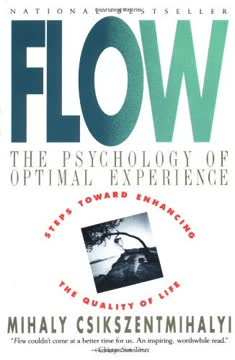Key Takeaways
1. Evolution shapes human behavior and relationships
We are, as Darwin reminded us in the Descent of Man, the product of a long evolutionary history.
Evolutionary legacy. Our behaviors, relationships, and even physical traits are deeply influenced by our evolutionary past. This includes our tendencies towards certain mating strategies, our social structures, and our cognitive abilities. For example, our preference for partners with complementary immune systems, as revealed through kissing and scent, is an evolutionary adaptation to produce offspring with stronger immune defenses.
Modern implications. Understanding our evolutionary heritage helps explain many aspects of modern human behavior that might otherwise seem puzzling. For instance, the prevalence of certain psychological traits, like jealousy or risk-taking behavior in males, can be traced back to evolutionary pressures. Similarly, our struggles with issues like obesity or anxiety in modern environments can be understood as mismatches between our evolved tendencies and current living conditions.
2. The social brain hypothesis explains our cognitive abilities
We have our big brains to enable us to cope with the complexities of our social world.
Brain size and social complexity. The social brain hypothesis suggests that our large brains evolved primarily to manage complex social relationships. This theory is supported by the correlation between brain size (particularly neocortex size) and social group size across primate species.
Dunbar's Number. This concept, named after the author, suggests that humans can maintain stable social relationships with about 150 people. This number appears consistently across various human societies and organizations, from hunter-gatherer groups to modern businesses. It reflects the cognitive limits of our social brain capacity.
- Layers of social relationships:
- 5 closest friends/family
- 15 good friends
- 50 friends
- 150 acquaintances
3. Language and gossip play crucial roles in human bonding
Real conversations in the everyday world are simply plain honest grooming.
Language as social grooming. Human language evolved not just for information exchange, but as a form of social bonding, analogous to physical grooming in other primates. Gossip, in particular, serves important social functions:
- Maintaining group cohesion
- Sharing social information
- Enforcing social norms
Evolution of communication. The development of language allowed humans to form larger, more complex social groups by enabling:
- Sharing of information about absent individuals
- Coordination of group activities
- Transmission of cultural knowledge
4. Evolutionary scars influence modern human traits and challenges
We are, as a species, rather an uptight lot: we don't like being touched.
Evolutionary mismatches. Many modern human traits and challenges can be traced back to our evolutionary history. For example:
- Our tendency to overeat in the presence of abundant food
- The prevalence of lower back pain due to our upright posture
- The difficulties of childbirth due to our large brain size
Medical implications. Understanding these evolutionary "scars" can inform medical practices and public health strategies. For instance, recognizing the evolutionary basis of morning sickness as a protection mechanism for the fetus can lead to more informed approaches to managing pregnancy.
5. Cultural evolution and morality emerge from our cognitive capacities
Only humans seem able to detach themselves from their own parochial concerns to imagine that things could be other than they are.
Theory of mind. The human ability to understand others' mental states (theory of mind) is crucial for the development of complex culture and morality. This capacity, which develops around age 4-5 in children, allows for:
- Advanced social cooperation
- Creation of shared beliefs and norms
- Development of religious and moral systems
Cultural transmission. Our advanced cognitive abilities, particularly our capacity for language and abstract thought, enable the rapid transmission and accumulation of cultural knowledge. This cultural evolution has allowed humans to adapt to a wide range of environments and challenges much faster than biological evolution alone.
6. Mating strategies reflect evolutionary adaptations
In evolutionary terms, it is not so much that we are using more and more fossil fuel each decade, or carelessly dumping wastes and surpluses, but that there are just more and more of us every year wanting to do these things.
Mate selection criteria. Evolutionary pressures have shaped human mating strategies and preferences. For example:
- Men tend to value youth and physical attractiveness in partners
- Women often prioritize resources and status in potential mates
Monogamy vs. promiscuity. Human mating behaviors show a mix of monogamous and promiscuous tendencies, reflecting our complex evolutionary history. Factors influencing these behaviors include:
- Genetic predispositions (e.g., variations in vasopressin receptor genes)
- Environmental and cultural influences
- Individual life experiences and circumstances
7. Science and art intertwine in human cognition and creativity
Polymaths of science
Multifaceted human intellect. The book challenges the notion of a divide between scientific and artistic thinking, highlighting numerous examples of scientists with artistic talents and vice versa. This interconnection reflects the versatility of human cognition and creativity.
Cognitive foundations of art and science. Both artistic and scientific endeavors rely on similar cognitive abilities:
- Abstract thinking
- Pattern recognition
- Imagination and creativity
- Observational skills
The author argues that the ability to engage in both scientific and artistic pursuits is a hallmark of human cognitive flexibility, rooted in our evolutionary development of advanced social cognition and language abilities.
Last updated:
Review Summary
How Many Friends Does One Person Need? received mixed reviews. Many readers found the book's diverse topics on evolutionary psychology interesting, but criticized its lack of coherence and scientific rigor. Some appreciated Dunbar's accessible writing style and intriguing insights, while others felt the content was superficial and poorly supported. The book's title was deemed misleading, as it only briefly addresses Dunbar's Number. Readers noted the author's occasional humor but also pointed out potential biases. Overall, opinions varied widely on the book's value and readability.
Similar Books







Download PDF
Download EPUB
.epub digital book format is ideal for reading ebooks on phones, tablets, and e-readers.








